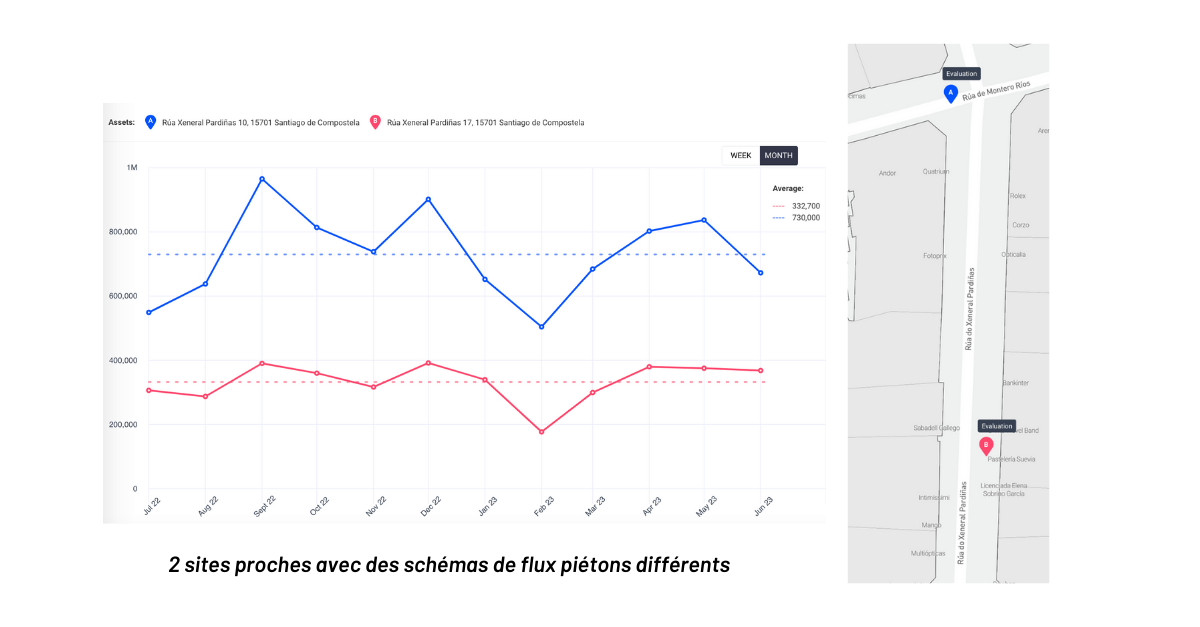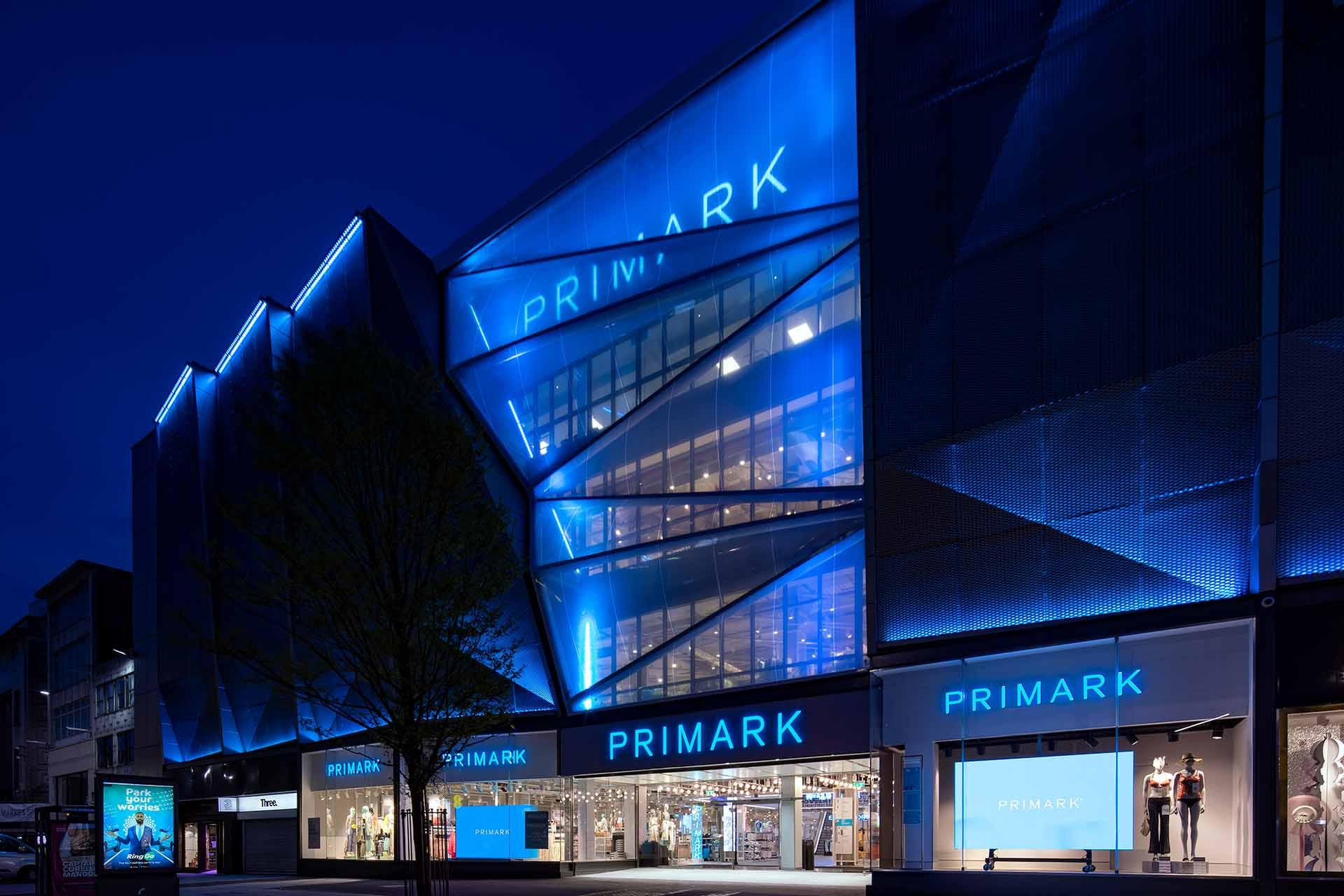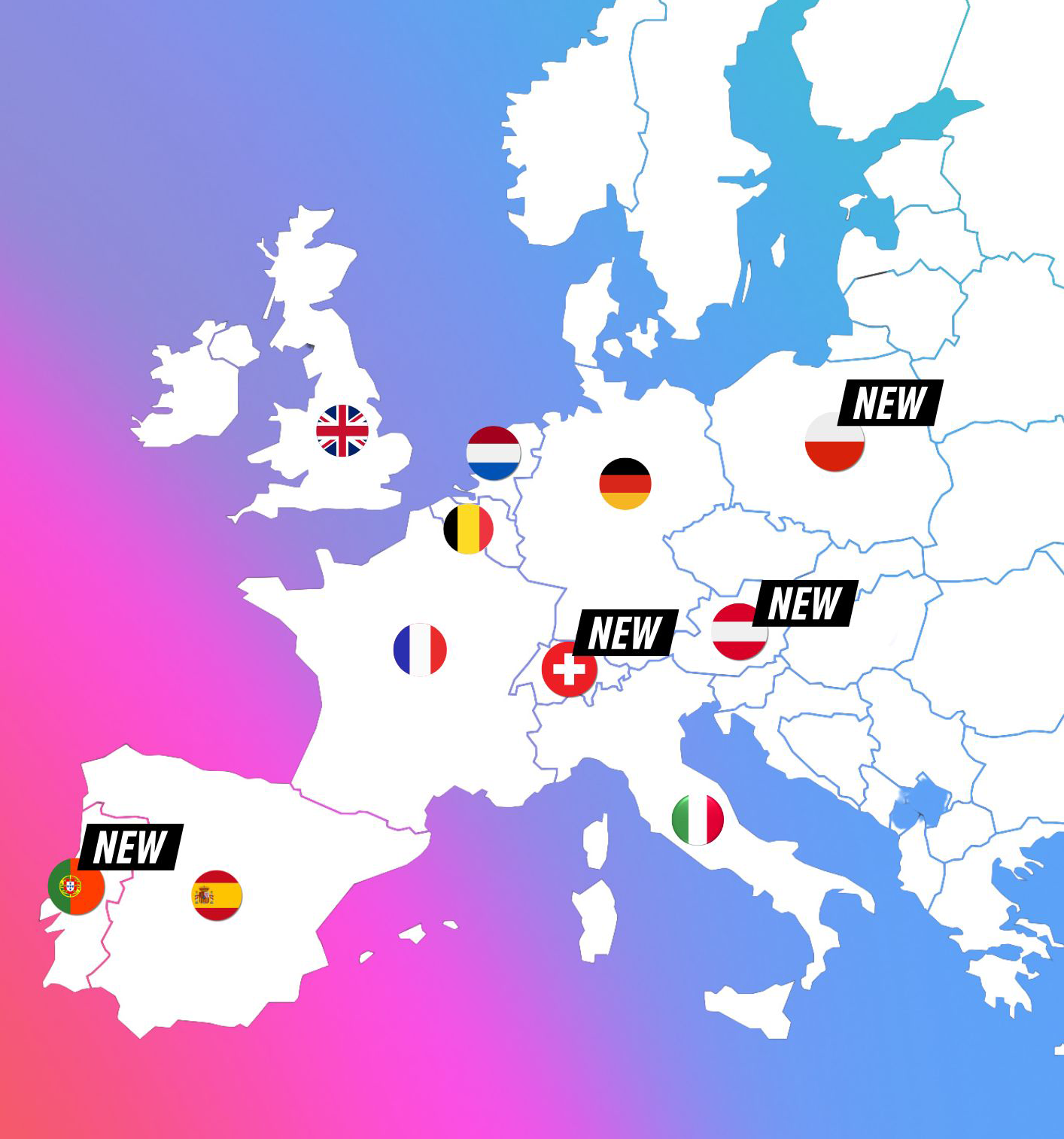Follow us on
Each company has different needs when it comes to implementing its expansion strategy. Recent years have been marked by a similar trend in the search for data to facilitate the development of these expansion strategies. Today, it is possible to obtain a lot of information about a location, from the profile of visitors, to the addresses studied, to the evolution of traffic in certain areas and shopping streets. However, many companies prioritize the use of 3 particular data: the evolution of pedestrian traffic, comparison with competitors and heat maps.
1. L'évolution du trafic piétonnier d'une adresse précise
Having a vision of what is happening in an interesting direction for your brand is sometimes complicated. Many companies invest a lot of time and money sending their development and expansion teams to learn about these potential new sites.
In addition, these teams have the enormous responsibility of choosing the best location, based on data relating to the space (number of square meters, address, number of windows, rent, etc.), but also according to the potential for attracting customers.
In the latter case, these teams have few alternatives to achieve this, whether through:
- Manual counting: This involves using a manual counter to count the number of people passing in front of the store for a few hours. This method is quite imprecise in terms of actual footfall and is considered insufficient to represent reality.
- Counting through solutions: Thanks to the recording of people flows through mobile GPS data, platforms such as Mytraffic are able to carry out exhaustive studies, providing companies studying these potential locations with data on traffic evolution at that address, street or commercial area. This makes it possible to get a clearer and more precise idea of the attractiveness potential of a place and to streamline the decision-making process.

2. Comparison of competitors' presence at this same address
Another interesting aspect for companies looking for a new site to set up shop is to know what their competitors are doing geographically, i.e. to carry out a kind of benchmark study.
The first thing that a development and/or expansion manager may find useful is to know which of their competitors are located near their company's potential new premises.
The presence of competitors may indicate that:
- These are areas with high pedestrian traffic
- These are areas that attract people with a similar or identical shopping profile to that of the brand.

On the other hand, it is interesting to know, as mentioned in the previous point, the evolution of the traffic of the different competing brands and to truly understand the potential of that area or street.
It often happens that within the same street, a part of the street does not function in the same way (up or down, left or right) depending on various factors such as the proximity of large commercial areas, accessibility to public transport, vehicle accessibility, etc.

It may also be important to know the distribution of this traffic throughout the week and the day: what are the peak hours and key days for this street or commercial area, do some streets stand out from others, does traffic remain stable in the same area or does it vary from one street to another?
By answering these questions, we can foresee strategies to implement on site to reactivate or attract visitors to the commercial premises of the brand we manage.

3. Heatmaps or Global Traffic Evolution Maps
Finally, one of the data that can also be useful for decision-making is the famous heatmap. Thanks to it, visualizing such an evolution becomes much simpler and more obvious.
At a glance, you can see which streets or areas attract the most pedestrians and which ones experience constant evolution over time and throughout the week.

In this case, it can also resolve conflicts related to the final decision regarding a location. As in the example above, we have two sites close to each other, but one attracts more traffic than the other. This can help development and expansion managers renegotiate their leases, establish attraction strategies, etc.
As can be seen, this data can facilitate the work of the development and expansion teams of these companies, but it can be extended to many other teams such as marketing and communication departments.
Data such as the origin of visitors, socio-demographic profile, purchasing habits by sector, among others, can help these teams develop marketing strategies to attract these consumers from the online sphere to the offline sphere.
To resume
Creating an effective expansion strategy relies on the cross-analysis of three key types of data. First, pedestrian traffic must be measured to assess the real potential of locations and identify high-traffic areas. Next, analyzing the presence and performance of competitors makes it possible to identify attractive sectors while avoiding saturated areas. Finally, the use of heatmaps helps to visualize dynamic areas and quickly compare several sites. By combining this information, brands can choose their new locations more safely, strategically, and profitably.











